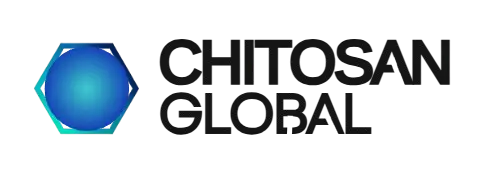Chitosan: A Sustainable Biopolymer for 3D Bioprinting and Tissue Regeneration
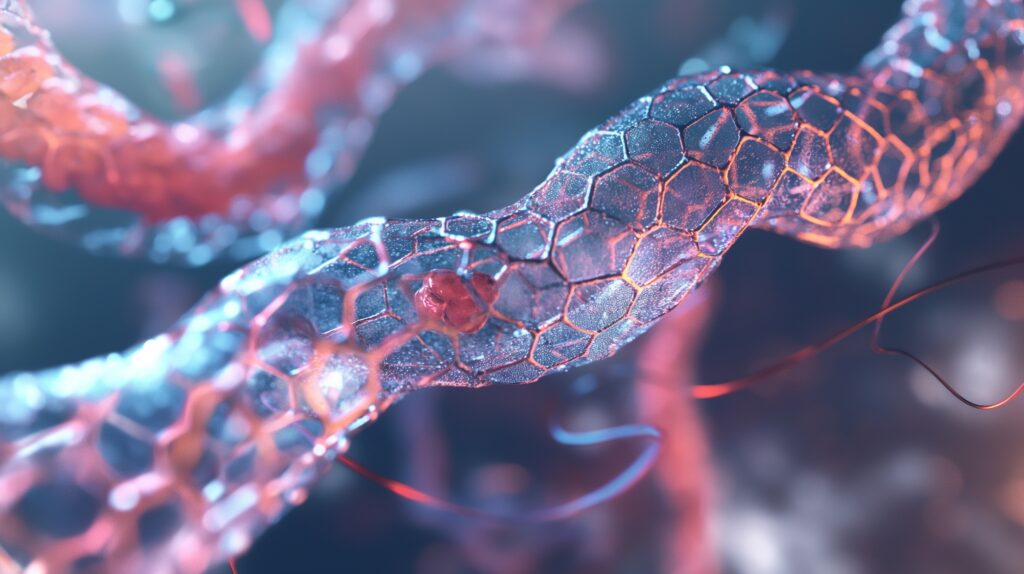
Chitosan, a versatile biopolymer derived from chitin, has found widespread applications across multiple industries due to its unique properties. This biodegradable, biocompatible and non-toxic compound offers a range of benefits in various sectors:
- Healthcare and Pharmaceuticals:
Chitosan’s biocompatibility makes it invaluable in medical applications. It is used in wound healing products, drug delivery systems, and as a biomaterial in tissue engineering. Its ability to promote healing and control drug release has made it a popular choice in the pharmaceutical industry. - Environmental Protection:
In water treatment, chitosan’s capacity to bind with heavy metals and other contaminants makes it an effective agent for purification processes. This property has led to its use in both industrial and municipal water treatment facilities. - Agriculture:
Farmers and agronomists utilize chitosan as a natural biostimulant and elicitor. It enhances plant growth and boosts resistance against pathogens, contributing to more sustainable agricultural practices. - Food Industry:
Chitosan serves multiple purposes in food production and preservation. It acts as an antimicrobial food additive and can be used to create edible films or coatings extending perishable products’ shelf life. - Beverage Production:
In the alcoholic beverage industry, chitosan is employed to clarify wines, beers, and whiskeys, helping to improve their clarity and stability. - Dietary Supplements:
The compound is also used in the production of dietary supplements, capitalizing on its numerous health benefits. - Plastics Industry:
Chitosan’s biodegradable nature makes it an attractive option for developing eco-friendly plastic alternatives. Those are just a few applications. Here are some more:
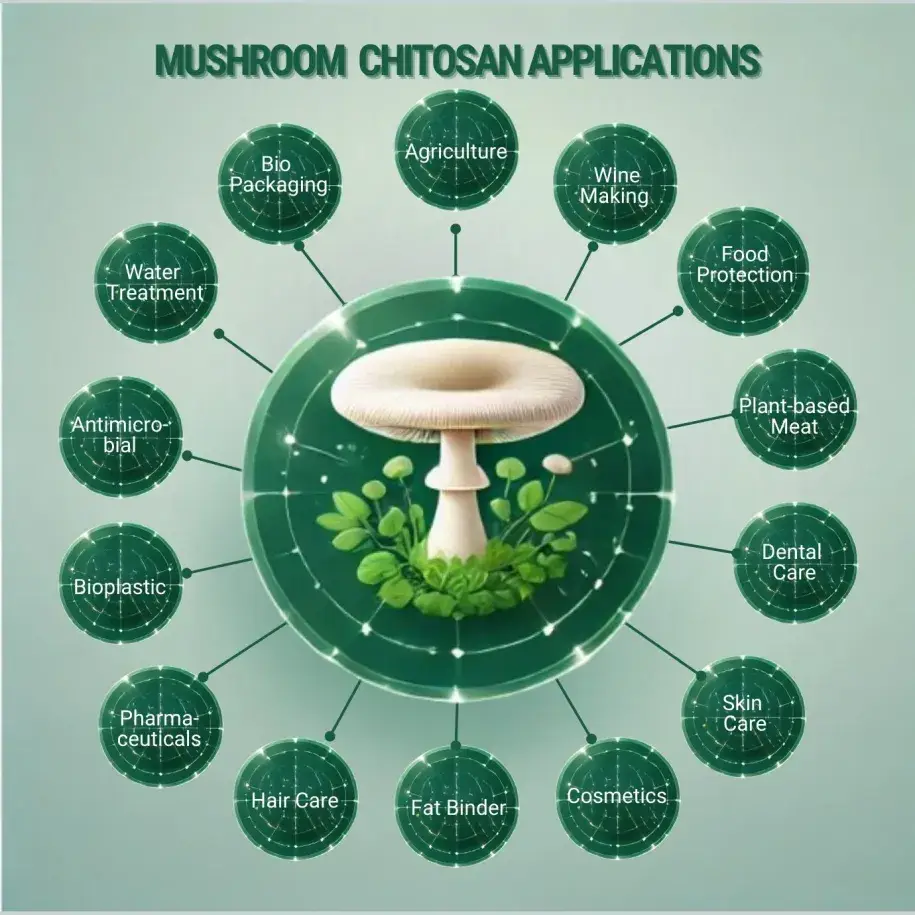
Variants:
- Traditional Chitosan: Derived from shellfish waste
- Mushroom Chitosan: Derived from oyster mushrooms, offering an alternative for those seeking non-animal-derived products.
- Mycelium Chitosan: Derived from Aspergillus Niger is very consistent and reliable and of non-animal origin.
Chitosan’s versatility, biodegradability, and non-toxic nature make it a valuable material across various industries, from healthcare to cosmetics. Its ability to be derived from non-animal sources also makes it an appealing option for vegetarian and vegan-friendly products.
What are the advantages of non-animal, fungal Chitosan?
Fungal origin Chitosan is a type of chitosan derived from the cell walls of fungi. It has several advantages over traditional chitosan derived from shellfish, including:
- Vegan and vegetarian-friendly: Mushroom chitosan is an excellent alternative for individuals who avoid animal-based products, such as those who follow a vegan lifestyle.
- Allergen-free: Traditional chitosan is derived from shellfish, which can cause allergic reactions in some people. Mushroom chitosan does not contain any shellfish-derived ingredients, making it an allergen-free option.
- Purer: Vegetal chitosan is often considered to be purer than traditional chitosan because it is derived from a single source, whereas traditional chitosan can be contaminated with other shellfish-related substances.
- Better solubility: Mushroom chitosan is more soluble than traditional chitosan, which makes it easier to incorporate into a variety of applications such as cosmetics, bioplastics, wound care and food.
- Improved bioavailability: Some studies have suggested that mushroom chitosan has higher bioavailability compared to traditional chitosan, which means that it can be absorbed and utilized more effectively by the body.

Chitosan from fungal sources offers several advantages over traditional shellfish-derived chitosan, making it an attractive alternative for individuals and industries looking for a vegan, allergen-free, chitosan source.
What are the benefits & functions of chitosan in 3D Printing applications?
Biocompatibility and Biodegradability: Chitosan is biocompatible and biodegradable, making it an ideal choice for medical applications such as scaffolds for tissue engineering, biodegradable implants, or drug delivery systems.

Enhancing Mechanical Strength with Chitosan in 3D Printing
The incorporation of chitosan into biopolymer blends used in 3D printing can significantly enhance the mechanical properties of the printed objects. This improvement includes:Key Mechanical Properties
- Tensile Strength: Chitosan can increase the tensile strength of biopolymer blends, making them more resistant to breakage under tension.
- Elongation: The addition of chitosan can also improve the elongation at break, allowing the material to stretch further without failing.
- Elasticity: Chitosan can enhance the elasticity of the biopolymer blends, enabling them to return to their original shape after deformation.
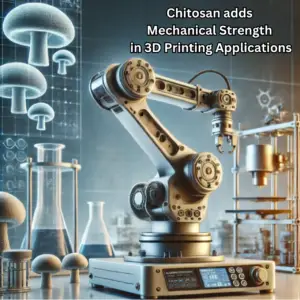
Antimicrobial Properties of Mushroom Chitosan in 3D Printing
Mushroom chitosan, characterized by its ultra-low molecular weight and high degree of deacetylation, is renowned for its potent antimicrobial and electrostatic properties. When incorporated into 3D printing filaments, mushroom chitosan can confer antibacterial and antifungal attributes to the printed objects, making them ideal for applications where sterility is paramount.Key Antimicrobial Attributes
- Antibacterial Properties: Mushroom chitosan has been shown to effectively inhibit the growth of bacteria, making it suitable for applications requiring high sterility.
- Antifungal Properties: Its antifungal attributes can prevent the proliferation of fungi, further enhancing the sterility of printed objects.
- Electrostatic Properties: The electrostatic nature of mushroom chitosan can attract and neutralize pathogens, contributing to its antimicrobial efficacy.
Applications in Medical Devices and Beyond
The antimicrobial properties of mushroom chitosan make it an excellent choice for 3D printing applications in:- Medical Devices: Incorporating mushroom chitosan into medical devices can help maintain sterility and prevent infections.
- Healthcare Equipment: Printed objects with antimicrobial properties can be used in healthcare settings to reduce the risk of microbial contamination.
- Consumer Products: Antimicrobial attributes can also benefit consumer goods, such as kitchen utensils and personal care items, by reducing microbial growth.
Advantages of Using Mushroom Chitosan
- Natural Origin: Mushroom chitosan is derived from natural sources, making it a biocompatible and environmentally friendly option.
- Biodegradability: Its biodegradable nature ensures that printed objects can decompose without harming the environment.
- Customization: The antimicrobial properties of mushroom chitosan can be tailored by adjusting its molecular weight and degree of deacetylation, allowing for precise control over its antimicrobial efficacy.
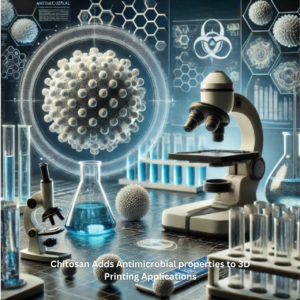
Biomedical Applications and Environmental Benefits of Mushroom Chitosan
Mushroom chitosan offers significant advantages in biomedical applications and environmental sustainability, making it an attractive material for 3D printing.Supports for Cell Growth and Tissue Regeneration
In biomedical applications, mushroom chitosan demonstrates excellent support for cell adhesion and growth. This property makes it ideal for printing 3D scaffolds that promote and enhance tissue regeneration. The biocompatibility and bioactivity of mushroom chitosan can facilitate the creation of complex tissue structures, aiding in the repair and regeneration of damaged tissues.Environmental Impact Reduction
Mushroom chitosan oligosaccharide is derived from a renewable and sustainable source, offering a more environmentally friendly alternative to traditional plastic materials. The incorporation of chitosan into 3D printing can contribute to reducing the negative environmental impact of this technology. Key benefits include:- Biodegradability: Chitosan is biodegradable, reducing the accumulation of non-degradable plastics.
- Renewable Source: Derived from mushrooms, chitosan oligosaccharide is a renewable resource.
- Lower Carbon Footprint: The production of chitosan can have a lower carbon footprint compared to synthetic plastics.
Applications in Biomedical 3D Printing
The combination of biocompatibility, support for cell growth, and environmental sustainability makes mushroom chitosan an excellent choice for various biomedical 3D printing applications, including:- Tissue Engineering: Creating 3D scaffolds for tissue regeneration and repair.
- Drug Delivery Systems: Designing biodegradable drug delivery systems with controlled release properties.
- Biomedical Devices: Manufacturing biocompatible devices for medical use, reducing the risk of adverse reactions.

Chemical Functionalization of Chitosan for Customized 3D Printing Applications
Chitosan’s versatile chemical structure enables easy functionalization, allowing it to be chemically modified to create derivatives with tailored properties for specific 3D printing applications. This high adaptability makes chitosan an ideal material for creating specialized materials that meet the precise requirements of focused applications.Customization through Chemical Modification
Chitosan’s chemical structure can be modified to introduce various functional groups, enhancing its properties and making it suitable for a wide range of applications. This customization can include:- Hydrophobicity/Hydrophilicity: Modifying chitosan to alter its interaction with water, affecting its solubility and swelling behavior.
- Charge Density: Adjusting the charge density of chitosan to influence its interaction with other molecules and its performance in specific applications.
- Biodegradability: Tailoring the biodegradability of chitosan to control its lifespan and degradation rate in biological environments.
Expert Guidance for Optimal Derivative Selection
Chitosan Global is committed to helping your team determine the exact derivative that best fits your application. Our expertise in chitosan modification and application ensures that you can leverage the full potential of chitosan in your 3D printing projects.Benefits of Customized Chitosan Derivatives
- Enhanced Performance: Customized chitosan derivatives can provide improved mechanical, thermal, or biological properties tailored to your specific application.
- Increased Efficiency: By selecting the optimal derivative, you can streamline your development process and reduce the need for trial and error.
- Cost-Effectiveness: Customized chitosan derivatives can help minimize material waste and optimize resource use, leading to more cost-effective solutions.
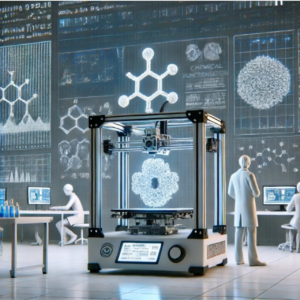
Versatility and Applications of Mushroom Chitosan in 3D Printing
Mushroom chitosan’s unique attributes make it a versatile and cost-effective material in 3D printing, particularly for applications requiring biocompatibility, environmental sustainability, and functional performance.
Key Applications and Products
Mushroom chitosan can be employed in various 3D printing applications, including:
Biomedical Scaffolds
Mushroom chitosan is ideal for fabricating 3D-printed scaffolds used in tissue engineering. These scaffolds support the growth and regeneration of tissues such as bone, cartilage, and skin.
- Bone Regeneration Scaffolds: 3D printed scaffolds that facilitate the growth and integration of new bone tissue.
- Cartilage Repair Structures: Custom structures to support cartilage regeneration in joints.
- Dermal Scaffolds: Used for skin regeneration, particularly in treating burns and large wounds.
Chitosan Addition Ratio
Chitosan is typically used in concentrations of 1% to 3% by weight in composite materials. These composites may also include bioceramics like hydroxyapatite or other polymers to enhance structural and mechanical properties. The exact ratio can vary based on the required scaffold porosity and mechanical strength.
Benefits of Using Mushroom Chitosan
- Biocompatibility: Mushroom chitosan is biocompatible, reducing the risk of adverse reactions.
- Environmental Sustainability: Derived from renewable sources, mushroom chitosan is a more sustainable option compared to traditional materials.
- Functional Performance: Its unique properties can be tailored to meet specific application requirements, ensuring optimal performance.
Customization and Expert Guidance
The optimal addition ratio of chitosan in 3D printing applications depends on the specific properties and functionality required for each product. Chitosan Global is available to help determine the exact derivative and addition ratio that best fits your application, ensuring that you can leverage the full potential of mushroom chitosan in your 3D printing projects.
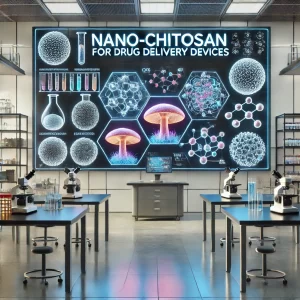

 Wound Healing Products: Chitosan’s natural antimicrobial and healing properties make it suitable for 3D printing wound dressings and other products that facilitate faster healing of wounds.
Wound Healing Products: Chitosan’s natural antimicrobial and healing properties make it suitable for 3D printing wound dressings and other products that facilitate faster healing of wounds.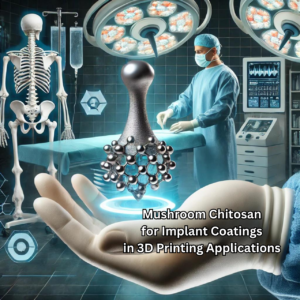
Which type of chitosan is more suitable for each application area or product in 3D printing?
For 3D printing applications, the choice of chitosan type significantly influences the processing ability and the quality of the final product. Each type of chitosan mentioned offers different properties that make them suitable for specific 3D printing applications:
Acid-Soluble Chitosan (viscosity 20-100 cps):
Drug Delivery Devices: Suitable for creating intricate devices with fine details, as lower viscosity aids in precision printing.
Wound Healing Products: Ideal for thin, flexible layers needed in advanced wound dressings, allowing for easy application and comfort.
Acid-Soluble Chitosan (viscosity 100-500 cps):
Biomedical Scaffolds: Provides a good balance between flowability and structural integrity, essential for creating scaffolds that support cell growth and tissue formation.
Dental Implants and Structures: Offers sufficient viscosity for the detailed printing required for dental applications while maintaining ease of processing.
Acid-Soluble Chitosan (viscosity 500-1000 cps):
Customized Prosthetics: Higher viscosity helps in forming more robust and durable prosthetics, which need to withstand mechanical stress.
Surgical Planning and Training Models: Benefits from higher viscosity to ensure stability and detail retention in complex anatomical models.
Chitosan Hydrochloride:
Implant Coatings: Its enhanced solubility makes it ideal for creating coatings on implants that can be easily applied and uniformly cover complex geometries.
Drug Delivery Systems: Useful for creating drug delivery mechanisms that require precise control over the release rates, aided by its solubility characteristics.
Chitosan Oligosaccharide:
Skin Care Products: Low molecular weight and high solubility are advantageous for 3D printed cosmetic applications, allowing for better skin absorption.
Nutraceutical Delivery: Suitable for printing delivery systems for bioactive compounds that benefit from rapid dissolution and absorption.
Carboxymethyl Chitosan:
Wound Dressings: Its hydrophilic nature makes it excellent for creating moisture-maintaining dressings, crucial for healing environments.
Biomedical Scaffolds: Enhances cell attachment and proliferation due to its modified surface, making it ideal for tissue engineering applications.
Quaternary Chitosan: Institutional Cleaning Products – Replaces Toxic Quaternary Ammonium Compounds
Surgical Models and Prototyping: The powder form can be tailored in terms of viscosity for detailed and precise model creation, suitable for surgical rehearsals and educational purposes.
Customized Drug Delivery Systems: Allows for the inclusion of various pharmaceutical agents, adjusting the powder’s formulation for specific release profiles.
Each derivative of chitosan offers unique advantages depending on the requirements of the application, such as solubility, viscosity, biocompatibility, and mechanical properties, making the selection process critical to the success of the 3D printed products. (Reach out to Steve Nice at steve@shieldnutra.com if you need help specifying the right chitosan for your application.)
What are the common forms of mushroom chitosan used in 3D printing?
In 3D printing, chitosan is utilized primarily in forms that are amenable to the printing process and the desired properties of the final product.
Each type of chitosan offers unique properties that make it particularly suitable for different 3D printing applications.
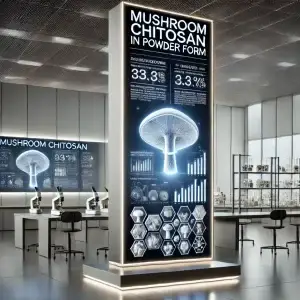
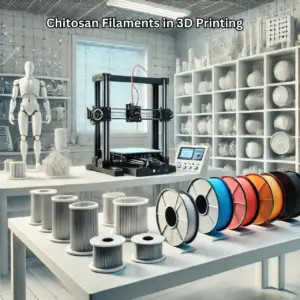

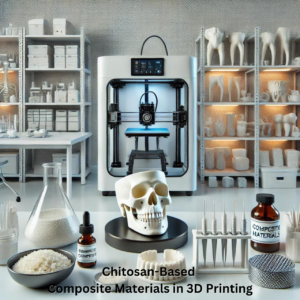
Chitosan Derivatives in 3D Printing: Versatility and Applications
Chitosan derivatives offer a wide range of possibilities in 3D printing applications, capitalizing on the material’s inherent biocompatibility, biodegradability, and customizable functional properties. The selection of a specific chitosan form depends largely on the intended application and the 3D printing technology being employed.
Tailored Benefits for Specific Applications
Each chitosan derivative can be optimized to maximize its advantages in particular 3D printing scenarios. This adaptability allows researchers and manufacturers to leverage chitosan’s unique properties to meet the exacting requirements of medical and biotechnological fields.
Biocompatibility and Safety
Chitosan’s natural origin significantly reduces the risk of adverse reactions in applications requiring direct contact with biological tissues. This characteristic promotes safer and more effective clinical outcomes, making chitosan an attractive option for biomedical 3D printing.
Versatility in 3D Bioprinting
In the rapidly evolving field of 3D bioprinting, chitosan’s adaptability and functionality make it stand out. By combining chitosan with other biocompatible materials, researchers can engineer composite biomaterials that closely mimic the natural extracellular matrix, supporting cellular activities and promoting tissue regeneration.
Diverse Medical Applications
Chitosan contributes significantly to advancements in medical technology across various applications:
- Crafting detailed anatomical models for surgical preparation
- Designing scaffolds that support the growth of bone or cartilage
- Formulating responsive drug delivery mechanisms
Environmental Sustainability
The ability to source chitosan from fungi, as opposed to traditional marine sources, enhances its appeal in modern biomanufacturing. This aligns with global efforts towards greener production practices and reduces the carbon footprint associated with medical materials production. By harnessing the unique properties of chitosan and its derivatives, 3D printing technologies can continue to push the boundaries of what’s possible in biomedical engineering and tissue regeneration, while maintaining a commitment to sustainability and biocompatibility.
Book a Free Consultation
Book an appointment if you don’t know what type of chitosan is best for your situation. We will offer you a free initial 30-minute consultation and product quotation.
